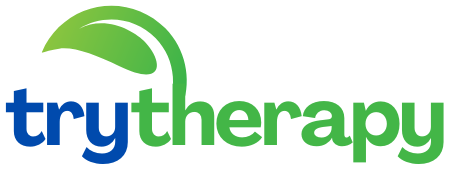Postpartum depression affects far more than just mood; it reshapes a mother’s entire experience. Learn to recognize the signs, understand the causes, and discover effective treatment options that go beyond “just getting through it.” The first time I admitted I might have postpartum depression, I was standing in my pediatrician’s office holding a screaming newborn, wearing sweatpals I’d worn for three days straight, and suddenly sobbing over a question about diaper changes. The nurse didn’t ask how the baby was sleeping, she looked directly at my shaking hands and asked, “How are YOU sleeping? And when was the last time you ate?” That moment of being seen not as a milk-producing, diaper-changing machine but as a human being in crisis—changed everything.
Postpartum depression (PPD) is often misunderstood as simply “baby blues” or normal new parent exhaustion. But what makes PPD different isn’t just the intensity of the symptoms, it’s how completely it rewires the experience of early motherhood. The clinical definition, a major depressive episode with onset during pregnancy or within four weeks after delivery doesn’t capture the lived reality of looking at your beautiful, healthy baby and feeling nothing but overwhelming dread. Or the bone-deep fatigue that persists no matter how much sleep you get. Or the intrusive thoughts that hijack what should be joyful moments.
The biology behind PPD explains part of the story. During pregnancy, estrogen and progesterone levels soar to up to 40 times normal levels, then plummet within 48 hours after delivery, a hormonal shift comparable to withdrawal from powerful drugs. For some women, the brain struggles to recalibrate these neurotransmitters, particularly those who are genetically predisposed to mood disorders. But reducing PPD to just hormones misses crucial psychosocial factors, the loss of personal identity, the radical life disruption, the often unrealistic expectations of “bouncing back.”
What surprised me most during my recovery was learning how many physical symptoms are tied to PPD. The headaches I blamed on sleep deprivation? The dizziness I attributed to low blood sugar? The heart palpitations I assumed were anxiety? All classic manifestations of postpartum depression that rarely make the “sadness and crying” symptom lists. My OBGYN explained that depression manifests differently in postpartum bodies, more irritability than sadness, more physical pain than overt despair. She called it “depression wearing a mask,” which explained why so many women don’t recognize their own suffering.
The treatment landscape for PPD has evolved dramatically in recent years. Beyond traditional antidepressants (which remain crucial for many), we now have the first FDA-approved medication specifically for postpartum depression—a 60-hour IV treatment that can produce relief within days rather than weeks. Talk therapy modalities like cognitive behavioral therapy (CBT) and interpersonal therapy (IPT) have shown particular success by addressing the radical identity shift new mothers undergo. Perhaps most importantly, there’s growing recognition that effective treatment must address practical needs childcare support, meal trains, housecleaning help not just biochemical imbalances.
One of the most insidious aspects of PPD is how it distorts self-perception. I remember staring at other mothers at the playground, convinced they had some secret maternal wisdom I lacked. Only later did I learn that nearly all of them had struggled too, we were all just better at hiding it than talking about it. This isolation fuels the depression, creating a vicious cycle where the less you share your struggles, the more abnormal you feel. Breaking that cycle through support groups, honest conversations with other moms, or even social media communities can be as therapeutic as any medication.
The ripple effects extend far beyond the mother. Research shows untreated PPD affects infant bonding, childhood development, and partner relationships for years. My husband later confessed he’d been walking on eggshells for months, afraid any comment might “set me off.” Our marriage counselor helped us understand that PPD is a family condition requiring family healing not something for the mother to endure alone.
Cultural expectations play a significant role in both causing and prolonging PPD. The myth of the “natural mother” who instinctively knows what to do sets women up for feelings of failure. The pressure to cherish every moment makes the hard moments feel like personal shortcomings. Even well-meaning advice like “sleep when the baby sleeps” ignores the reality that postpartum bodies often can’t sleep on command, no matter how exhausted they are.
Recovery isn’t linear. My good days started as brief moments—a five-minute period where I actually felt present with my baby, a shower where I didn’t dissociate, a meal I could taste rather than choke down. Gradually, those moments stretched into hours, then days. What helped most wasn’t “thinking positive” but practical strategies, setting phone alarms to eat and drink, scheduling “shift sleeping” with my partner, keeping a symptom log to show my doctor rather than relying on memory.
The most important lesson? Postpartum depression lies. It tells you you’re failing when you’re surviving. It convinces you you’re alone when millions of mothers share your experience. It makes you believe this will last forever when, with proper help, it won’t. My turning point came when a nurse practitioner told me, “This isn’t your personality, it’s a medical condition affecting your personality.” That distinction gave me permission to seek help without shame.
If you’re reading this while nursing a baby or pumping at 3 AM or hiding in the bathroom for five minutes of quiet, know this: You deserve support exactly as you are right now. Not when the baby sleeps through the night. Not when you “get your act together.” Right now. The bravest thing you can do is admit this is harder than you expected and ask for help.
References
Dennis, C.-L., & Chung-Lee, L. (2024). Barriers to help-seeking for postpartum depression mapped onto the socio-ecological model. *International Journal of Environmental Research and Public Health, 21*(9), Article 5452. https://pmc.ncbi.nlm.nih.gov/articles/PMC11157017/
Adewuya, A. O., Oladipo, B. F., & Raji, B. A. (2020). Prevalence and predictors of postpartum depression among postnatal women in Lagos, Nigeria. *Nigerian Medical Journal, 61*(1), 26-31. https://pmc.ncbi.nlm.nih.gov/articles/PMC8351853/
American Psychological Association. (2025). Postpartum depression: Causes, symptoms, risk factors, and treatment. https://www.apa.org/topics/women-girls/postpartum-depression
Centers for Disease Control and Prevention. (2024). Symptoms of depression among women. https://www.cdc.gov/reproductive-health/depression/index.html
Groves, P. S., & Preisser, J. S. (2021). Postpartum depression: Far-reaching impact and the role of education and intervention. *Open Journal of Nursing, 11*(3), 211-230. https://www.scirp.org/journal/paperinformation?paperid=107723

